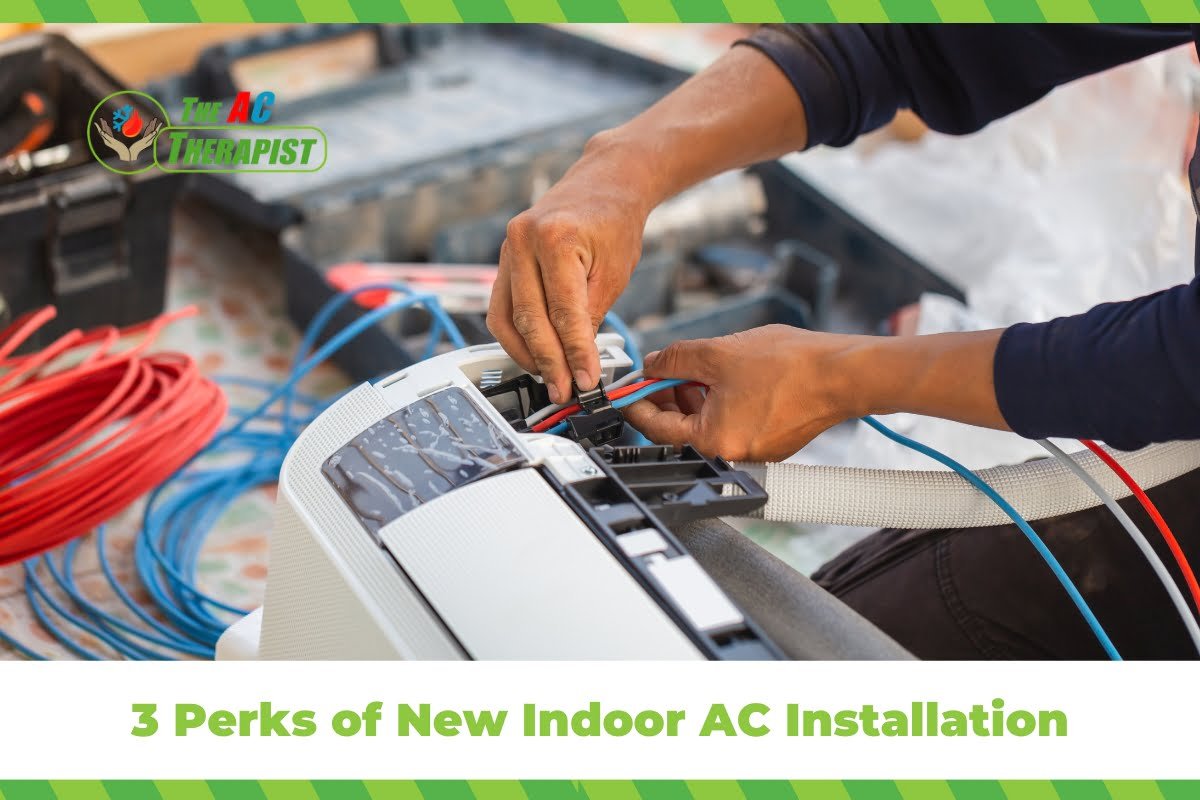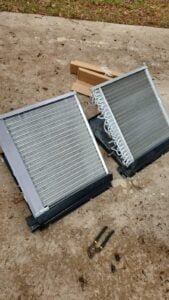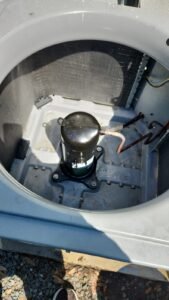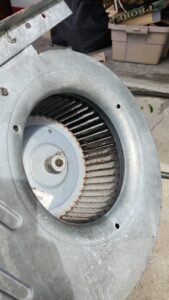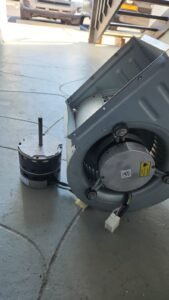3 Perks of New Indoor AC Installation
When it comes to maintaining a comfortable living environment, your air conditioning system plays a pivotal role. But what happens when your indoor AC unit starts underperforming or breaks down completely? One common question homeowners face is whether it’s possible and advisable to replace just the indoor unit of their AC system. In this comprehensive guide, we’ll explore the ins and outs of this issue, including benefits, considerations, and expert tips to make an informed decision.
Understanding Your AC System
Understanding your air conditioning (AC) system is crucial to ensuring your home remains comfortable and energy-efficient year-round. A typical residential AC system is designed to cool your home by removing heat and humidity from the indoor air and then circulating the cooled air back into your living spaces. To grasp the fundamentals of how your AC system works and the importance of its components, let’s break down the main parts and their functions.
The Split System: A Dual Component Setup
Most residential AC systems are split systems, consisting of two primary components: the indoor unit and the outdoor unit. This design allows the system to efficiently manage indoor temperatures by dividing the cooling process between the two units.
Indoor Unit
The indoor unit typically houses the evaporator coil and the air handler or blower. This unit is often located in a closet, attic, or basement. The main functions of the indoor unit include:
- Evaporator Coil: This coil holds the refrigerant that absorbs heat from the indoor air. As warm air passes over the cold evaporator coil, the refrigerant captures the heat, cooling the air, which is then recirculated back into the room.
- Air Handler: The air handler contains a fan that blows indoor air across the evaporator coil, facilitating the exchange of heat and assisting in distributing the cooled air throughout your home via ductwork.
Outdoor Unit
The outdoor unit contains the condenser coil, a compressor, and a fan. It is typically located on the side or back of a house. The outdoor unit’s primary functions include:
- Compressor: The compressor plays a critical role in the refrigeration cycle. It pressurizes the refrigerant, preparing it to absorb heat from the indoor air.
- Condenser Coil: After the refrigerant is pressurized and heated in the compressor, it moves to the condenser coil, where it releases the absorbed heat into the outdoor air.
- Fan: The fan in the outdoor unit blows air over the condenser coil to help dissipate the heat more quickly.
The Refrigeration Cycle: A Continuous Loop
The AC system operates in a continuous loop known as the refrigeration cycle. This cycle begins when the refrigerant enters the indoor unit’s evaporator coil as a low-pressure, low-temperature vapor. As warm indoor air passes over the coil, the refrigerant absorbs the heat and evaporates, cooling the air in the process. The refrigerant, now a warm vapor, is then pumped to the outdoor unit’s compressor, where it is pressurized and heated further. This high-pressure, high-temperature vapor travels to the condenser coil, where it releases its heat to the outdoor air and condenses back into a liquid. The refrigerant then returns to the indoor unit, and the cycle repeats.
Importance of Compatibility and Maintenance
Understanding the components and operation of your AC system underscores the importance of compatibility between indoor and outdoor units. They must work in tandem to efficiently cool your home. Additionally, regular maintenance is vital to ensure that each part of the system operates effectively, prolonging the life of your AC system and maintaining its energy efficiency.
The Case for Replacing Just the Indoor AC Unit
When considering updates to your air conditioning (AC) system, the question of whether to replace just the indoor unit often arises. This approach can seem appealing for various reasons, including cost, efficiency, and the desire to integrate advanced features. Let’s delve into the case for replacing only the indoor component of your split AC system, examining the benefits and situations where this might be a viable option.
Cost-Effectiveness
One of the primary motivations for replacing just the indoor unit is the potential cost savings. The initial outlay for a single unit is undoubtedly lower than the expense of replacing both the indoor and outdoor units simultaneously. Homeowners facing budget constraints or those who wish to minimize their immediate financial outlay may find this option particularly attractive.
Technological Advances
AC technology is continually evolving, with newer models offering improved energy efficiency, better air quality features, and smarter controls. Upgrading to a modern indoor unit can allow homeowners to take advantage of these advancements, enhancing comfort levels and potentially reducing energy bills, even if the outdoor unit remains unchanged.
Specific Component Failure or Damage
In some instances, the indoor unit might fail or become damaged due to various reasons such as electrical issues, mechanical wear and tear, or even external factors like water leakage affecting the indoor components. When the outdoor unit remains in good working condition, replacing only the damaged or malfunctioning indoor unit can be a practical and cost-effective solution.
Considerations for Partial Replacement
While there are compelling reasons to consider replacing just the indoor unit, it’s crucial to approach this decision with a clear understanding of several key considerations:
- Compatibility: The efficiency and effectiveness of your AC system rely heavily on the compatibility between the indoor and outdoor units. Incompatible units can lead to decreased performance, higher energy consumption, and increased wear on the system.
- Warranty Implications: Many manufacturers require that both the indoor and outdoor units be replaced together to maintain the warranty. Replacing just one component could potentially void your warranty, leaving you unprotected against future issues.
- Refrigerant Type: The type of refrigerant used by your AC system could dictate your options. With the phase-out of older refrigerants (like R-22) in favor of more environmentally friendly options (such as R-410A), ensuring that your new indoor unit is compatible with the refrigerant type of the outdoor unit is crucial.
Making the Decision
Deciding to replace only the indoor unit of your AC system is not straightforward. It involves weighing the immediate benefits against potential long-term considerations. Homeowners should:
- Consult HVAC Professionals: Before making any decisions, it’s advisable to consult with a certified HVAC technician. They can assess the health of both your indoor and outdoor units, provide compatibility guidance, and recommend the best course of action.
- Evaluate System Age: Consider the age of both components. If the outdoor unit is also nearing the end of its useful life, it might be more economical in the long run to replace both units simultaneously.
- Consider Future Savings: Although upgrading just the indoor unit can offer short-term savings and benefits, replacing the entire system might be more cost-effective over time, considering energy efficiency and potential repair costs.
The Risks and Considerations
When contemplating the replacement of just the indoor AC unit in your home, several risks and considerations come into play. While the prospect of updating your indoor AC component might seem appealing for various reasons, it’s essential to be fully aware of the potential pitfalls associated with this decision. Below, we’ll explore the key risks and considerations tied to replacing only the indoor AC unit, emphasizing the importance of making an informed choice.
Mismatched System Components
The efficiency and effectiveness of your air conditioning system hinge on the seamless operation between the indoor AC unit and its outdoor counterpart. Replacing only the indoor AC component without ensuring it’s perfectly matched with the outdoor unit can lead to several problems:
- Decreased Efficiency: A mismatch between the indoor AC unit and the outdoor unit can result in reduced efficiency. This inefficiency often leads to higher energy consumption as the system struggles to maintain the desired indoor temperature.
- Increased Wear and Tear: An incompatible indoor AC unit can cause the entire system to work harder than necessary, accelerating wear and tear on both components. This increased strain can shorten the lifespan of your air conditioning system.
- Poor Performance: When the indoor AC unit is not in sync with the outdoor unit, it can lead to inadequate cooling, uneven temperature distribution, and a less comfortable indoor environment.
Warranty Issues
Many manufacturers’ warranties require that the indoor AC unit and the outdoor unit be replaced together to maintain the warranty’s validity. Opting to replace only the indoor AC unit could void this warranty, leaving you without coverage for any future system failures or issues.
Refrigerant Type Compatibility
The type of refrigerant used by your AC system is a critical factor to consider. With the phase-out of certain refrigerants (like R-22) and the adoption of newer, more environmentally friendly options (such as R-410A), ensuring compatibility between your indoor AC unit and the existing outdoor unit becomes even more crucial. Replacing just the indoor AC unit without considering the refrigerant can lead to significant problems, including system malfunction and environmental harm.
Future Financial Implications
While replacing only the indoor AC unit might seem cost-effective in the short term, it’s essential to consider the long-term financial implications. The initial savings could be offset by increased energy bills due to decreased system efficiency, potential repair costs from increased wear and tear, and the expense of a sooner-than-expected replacement of the outdoor unit.
Making an Informed Decision
Before proceeding with the replacement of just your indoor AC unit, consider the following steps to mitigate risks:
- Consult with HVAC Professionals: A certified HVAC technician can assess your current system’s compatibility and advise on the best course of action.
- Research and Select Compatible Units: If you decide to replace the indoor AC unit, ensure it’s fully compatible with your outdoor unit, including considerations for refrigerant type and system capacity.
- Evaluate the Age and Condition of Your Entire System: Sometimes, the better financial decision, in the long run, is to replace both the indoor and outdoor units, especially if your system is old or nearing the end of its expected lifespan.
Making the Replacement
Deciding to replace just the indoor AC unit involves careful consideration of compatibility, efficiency, and the overall health of your air conditioning system. If you’ve weighed the pros and cons, consulted with a professional, and decided to proceed with replacing the indoor unit, here’s a guide to navigating the process smoothly and effectively.
Step 1: Determine Compatibility
The first and most crucial step is ensuring that the new indoor AC unit is compatible with your existing outdoor unit. This compatibility encompasses several factors:
- Refrigerant Type: Confirm that both units use the same type of refrigerant. With changes in environmental regulations, your new indoor unit must be compatible with the refrigerant used by the outdoor unit.
- System Capacity and SEER Rating: The capacity (measured in BTUs) and the efficiency rating (SEER) of the new indoor unit should match the outdoor unit. Mismatched units can lead to inefficiency and increased wear on the system.
- Brand and Model: While not always necessary, choosing the same brand and a compatible model can often ensure better integration and operation of the two units.
Step 2: Choose the Right Unit
With a myriad of options available, selecting the right indoor AC unit can be daunting. Consider these factors:
- Features and Technology: Look for units with features that meet your needs, such as improved air filtration, humidity control, and smart thermostat compatibility.
- Energy Efficiency: Higher SEER ratings mean better energy efficiency. While these units might be more expensive upfront, they can offer significant savings on energy bills over time.
- Warranty and Support: Check the warranty offered with the new unit. A longer warranty can provide peace of mind, but be sure to understand the terms and conditions.
Step 3: Professional Installation
Even if you’re handy around the house, installing an indoor AC unit is a job for certified HVAC professionals. Proper installation is crucial for several reasons:
- Ensuring Compatibility: Technicians can make any necessary adjustments to ensure that the new indoor unit works seamlessly with the existing outdoor unit.
- Optimizing Performance: A professional will calibrate the system to ensure optimal performance, efficiency, and longevity.
- Preserving Warranty: Many manufacturers require professional installation for the warranty to remain valid.
Step 4: Testing and Fine-Tuning
After installation, your HVAC technician should test the system thoroughly to ensure everything is functioning correctly. This testing includes checking for proper airflow, verifying that the thermostat is accurately controlling the system, and ensuring there are no leaks in the refrigerant lines.
Step 5: Maintenance Plan
Once your new indoor AC unit is installed and working correctly, consider setting up a regular maintenance plan. Regular maintenance can extend the life of your AC system, improve efficiency, and help prevent unexpected breakdowns. This plan might include annual inspections, cleaning of the evaporator and condenser coils, checking the refrigerant levels, and replacing filters.
Is It Possible to Replace Just the Indoor AC Unit? Expert Advice from The AC Therapist
In the journey to maintain a comfortable and energy-efficient home, especially in the challenging climate of the Tampa Bay area, homeowners often face crucial decisions about their air conditioning systems. One common dilemma is whether it’s feasible and wise to replace just the indoor AC unit. As The AC Therapist, we’ve delved deep into this topic, examining every angle to provide you with comprehensive insights.
The possibility of replacing only the indoor unit of your AC system is accompanied by a complex array of factors to consider. From the outset, the allure of potential cost savings and the opportunity to upgrade to newer, more advanced technology are compelling reasons to explore this option. However, as we’ve uncovered, these immediate benefits come with their own set of challenges, including the crucial aspect of ensuring compatibility between your new indoor unit and the existing outdoor unit, navigating warranty constraints, and the critical consideration of refrigerant types.
At The AC Therapist, we prioritize your comfort and satisfaction above all else. We understand that navigating these decisions can be overwhelming, which is why we’re dedicated to offering not just our expertise, but also our support and guidance. Should you choose to replace just the indoor unit, we’re here to ensure that the process is seamless, from selecting a unit that complements your existing system to guaranteeing a professional installation that upholds the integrity and efficiency of your AC system.
Furthermore, we believe in looking beyond the immediate. While replacing just the indoor unit might address short-term needs, we’re also here to help you consider the long-term implications on your system’s efficiency, reliability, and cost-effectiveness. With the rapid advancements in HVAC technology, a complete system upgrade could potentially offer more significant benefits in terms of energy savings, improved air quality, and enhanced control over your home’s climate.
As your trusted HVAC experts in the Tampa Bay area, The AC Therapist is committed to empowering you with all the information you need to make informed decisions about your air conditioning system. Whether it’s a straightforward replacement or a comprehensive system overhaul, our team is ready to provide the professional advice, exceptional service, and ongoing support you need to achieve optimal comfort and efficiency in your home.
In conclusion, the decision to replace just the indoor AC unit is nuanced, and influenced by various technical, financial, and practical considerations. We invite you to leverage our expertise at The AC Therapist as you navigate this decision. Our goal is to ensure that your home remains a haven of comfort and efficiency, tailored to your unique needs and preferences. Let us help you make the choices that best suit your home, ensuring that you and your loved ones enjoy a cool, comfortable environment for years to come.

